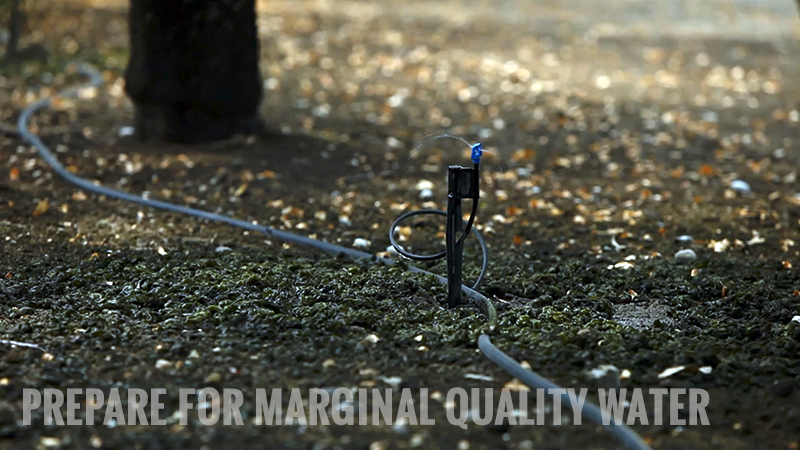New Product Called on to Defend Citrus From Scourge
Dr. Bob Bruss is Director of Technical Services for Nufarm, the manufacturer of a bactericide that has been approved for use on citrus to improve tree health of HLB-infected trees. Here, he gives insight on how the product works and ways to use it effectively and efficiently.

Bob Bruss
How should Mycoshield be applied when treating Florida citrus trees for HLB?
Bruss: At present, Florida growers are operating under a Section 18 (specific exemptions), which spells out use instructions and restrictions. FFVA is now working with FDACS seeking a renewal from EPA of the Section 18. Nufarm recommends applying 1½ pounds of Mycoshield per acre along with a high-quality penetrating surfactant. Growers have the flexibility to apply up to eight times per season with a 21-day preharvest interval.
When are applications of Mycoshield most effective?
Bruss: The last two years of research demonstrate Mycoshield is taken into citrus trees most effectively during periods of active leaf flushing. Generally, the greatest flushing occurs in spring and fall. This timing also corresponds to greater activity of HLB in plant tissues vs. summer when bacteria may drop naturally.
Can Mycoshield be tank-mixed with other standard products without impacting performance?
Bruss: It appears many growers are tank-mixing Mycoshield with a wide variety of other products normally used in a spray program. We have not received reports of either compatibility or phytotoxicity issues. Foliar applications of Mycoshield alone are not phytotoxic. However, some combinations of Mycoshield — plus other pesticides, surfactants and/or fertilizers — may cause crop injury. The crop safety of any Mycoshield mixture must be verified on a few trees before making a commercial application.
What are the recommendations for rotation of Mycoshield when applying to citrus?
Bruss: Oxytetracycline is the ultimate active ingredient resulting from an application of Mycoshield. This is a reversible bacteriostat that suppresses protein production in target bacteria. Multiple applications of oxytetracycline at frequent intervals are needed to starve the bacteria of essential proteins until they perish. Nufarm does not consider streptomycin to be an effective comparable bactericide on HLB. This is largely based on an independent published study conducted by M Zhang et al. (2014) at the UF/IFAS Indian River Research and Education Center. Lemon budsticks severely infected with HLB were soaked overnight in a solution with a high concentration of streptomycin sulfate and subsequently grafted onto disease-free grapefruit rootstocks. The young trees were evaluated after six months. The lemon scions had an 80% incidence of infection and 65% of the grapefruit rootstocks were infected despite the exposure to a high concentration of streptomycin sulfate. However, streptomycin may have some value in summer sprays for control of citrus canker. Streptomycin is an irreversible bactericide that has beenfrequently selected for commercial-level resistance in fire blight and other plant diseases. In more than 25 years of Mycoshield commercial use, Nufarm is aware of only a single orchard with documented fire blight resistance in California, and no confirmed commercial-level resistance to bacterial spot in peaches.
What are you hearing from growers regarding the trees’ response to applications?
Bruss: Generally, growers are reporting visual improvement in tree health and research consultants working with Nufarm on Florida trials are observing similar patterns. Since Mycoshield is a suppressive tool, we expect some larger, older trees may not respond as rapidly as younger plantings. Additionally, we expect tree health to show continued improvement the second year of treatment due to cumulative bactericide HLB-suppressive effects.
When would you expect to see more visual and/or yield impacts from the applications?
Bruss: Our research trial fruit drop/yield data will be evaluated in the near future. As stated, we also expect there to be a cumulative improvement next season into the summer. Hopefully, many of the trees that were treated in 2016 will have an improved leaf flush this spring. This in turn will provide more young foliage to absorb the 2017 applications leading to additional improvement in tree health.










